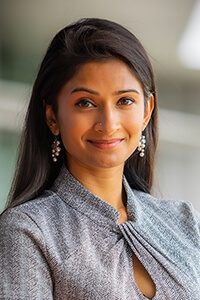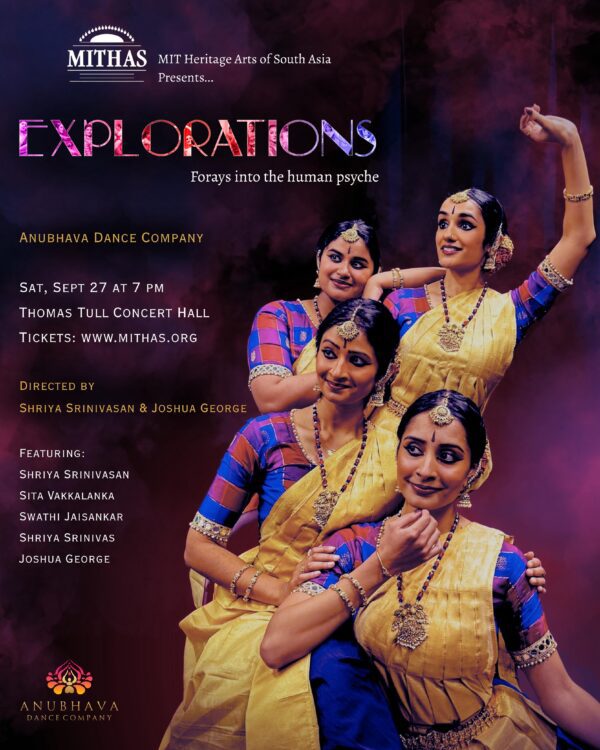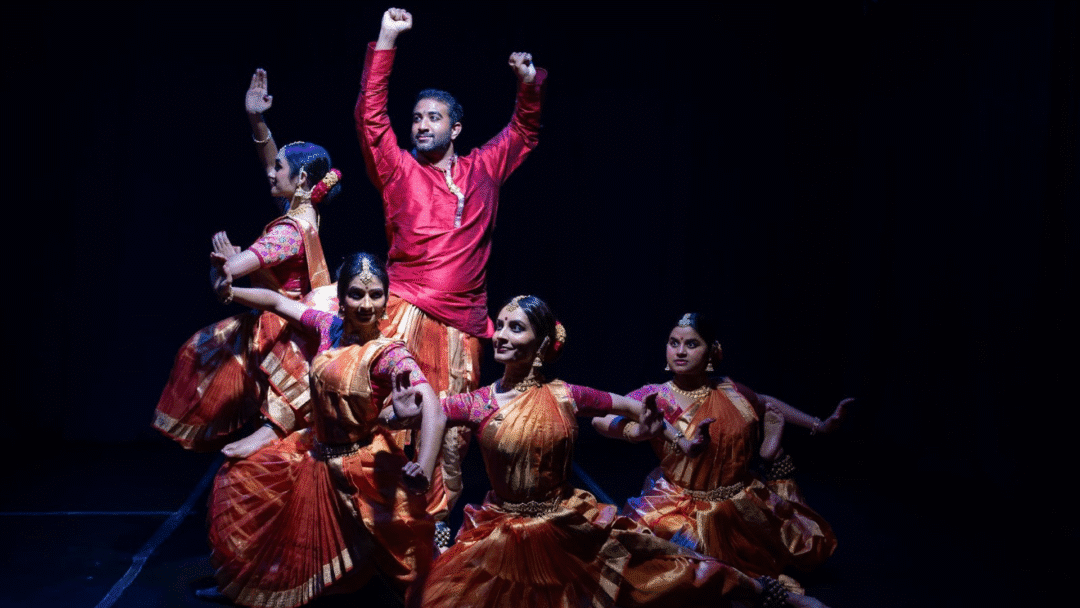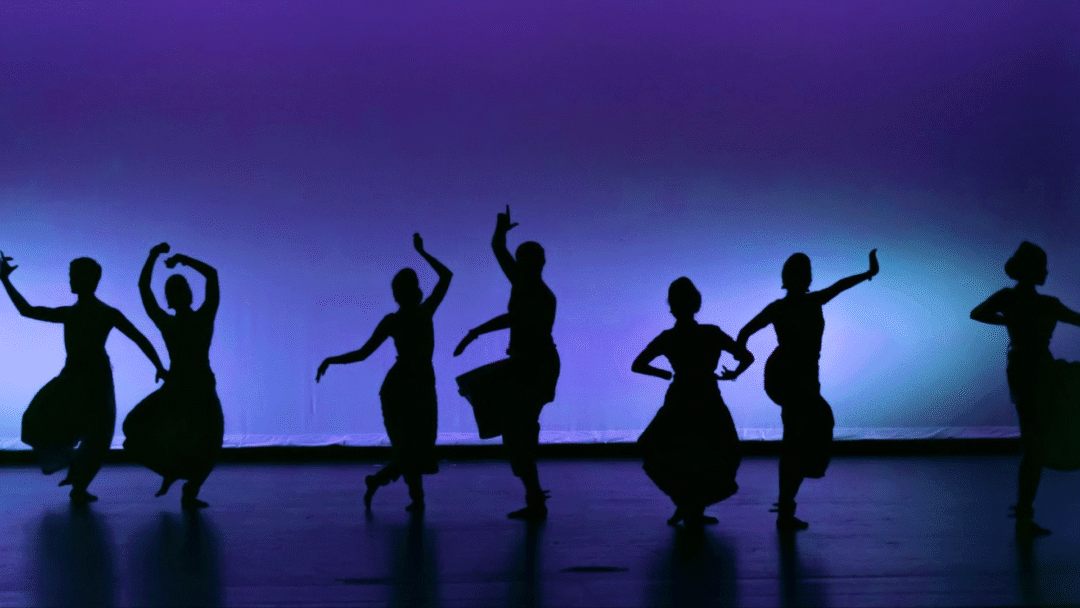Intersections Conference 2025: Traditions and Innovations in Indian Classical Dance is a September 27-28 conference at MIT and Harvard spotlighting U.S.-based Indian classical artists as innovators in movement, research, and pedagogy. Sessions will be centered on dialogue, debate, and professional development. The event, co-sponsored by the Mittal Institute, is organized by Prof. Haribabu Arthanari, president of MITHAS, Prof. Shriya Srinivasan, Assistant Professor of Bioengineering in the Harvard Paulson School of Engineering and Applied Sciences and Dr. Joshua George, co-director of the Anubhava Dance Company. We spoke with Prof. Srinivasan, herself a professional dance artist, to learn more about the motivations behind the first-of-its-kind conference.

Prof. Shriya Srinivasan
Mittal Institute: Prof. Srinivasan, tell us about your own journey with dance. What drew you to express yourself through movement; what captivates you most about the medium; and what style of dance do you personally prefer?
Shriya Srinivasan: I began learning dance at a very young age from my guru, Sujatha Srinivasan, founder and director of Shri Kalaa Mandir. My mother is a highly acclaimed artist, and growing up in her orbit meant I was always immersed in performance, practice, and teaching. I saw firsthand the dedication, the blood, sweat, and tears that go into an artistic life. Through that environment, I learned to use my body not only to tell stories and convey my own emotions, but also to stir sentiment in others, to communicate narratives in ways that words alone often cannot.
What captivates me most about dance is its ability to create a visceral response. While it demands precision, discipline, and complete mental engagement, it simultaneously invites you to surrender, to let expression flow through body and emotion. That balance between control and release, discipline and abandon is a challenge I embrace. The style I practice is Bharatanatyam, a South Indian classical form.
Mittal Institute: You are the director of Harvard’s Biohybrid Organs and Neuroprosthetics Lab and co-founder and artistic director of the Anubhava Dance Company, an Indian classical dance company. What crossovers do you see between science and dance?

The Anubhava Dance Company, an Indian classical dance company, will present their latest work Explorations on Sep 27, 2025
Shriya Srinivasan: Both my research and dance revolve around questions of sensation and motor control; how we perceive, how we move, and how we communicate through the body. In the lab, I work on building systems that restore or reimagine these functions, developing biohybrid organs or neuroprosthetics that allow someone to feel and move in ways they otherwise couldn’t. With dance, I engage with the similar fundamental components – how can we move seamlessly, to convey meaning, and to evoke emotion in others? Philosophically, they tug at the same question, which is the boundary of understanding the human experience.
There’s also a deeper crossover in the mindset both fields demand. Science requires rigor, discipline, and precision, but many creative breakthroughs occur when you step back and let intuition guide you. Dance mirrors this, especially in the creative aspect. Overall, science teaches me to push boundaries with methodical inquiry, while dance reminds me to stay connected to intuition, embodiment, and human expression.
Mittal Institute: What was the inspiration behind curating Intersections 2025, and what do you hope participants will take away from it?
Shriya Srinivasan: Prof Hari Arthanari of MITHAS, my co-director, Joshua George, and I wanted to bring an analytical lens to the evolution of Indian dance, especially in the diaspora. Specifically, we want to analyze trends in performance, choreography, and research and delineate the “evolutionary pressures” shaping these shifts.
Geography naturally creates distance. This distance creates space and time for introspection and divergent evolution. When an art form like Indian classical dance travels thousands of miles and takes root in a new country, it encounters new audiences, ecosystems, and cultural contexts. The people practicing it also bring different lived experiences. Together, these forces inevitably shape how the art form grows, adapts, and resonates in new ways.
In addition to showcasing research and new work being produced in the states, we wanted to curate a behind-the-scenes look at the thought processes underlying the work. By peeling back the layers, asking why artists and scholars are approaching their work in certain ways, we hope to spark dialogue and reflection that goes beyond the stage.
Ultimately, we hope that participants leave Intersections 2025 with a richer understanding of how Indian classical dance is evolving in the diaspora, and with new connections that inspire collaboration, innovation, and a deeper sense of shared purpose.
We hope that participants leave Intersections 2025 with a richer understanding of how Indian classical dance is evolving in the diaspora, and with new connections that inspire collaboration, innovation, and a deeper sense of shared purpose.
Mittal Institute: Why was it important to create a conference, rather than a festival, for Indian classical dance?
Shriya Srinivasan: We felt it was important to create a conference rather than a festival because we wanted the focus to be on conversations about the dance, not the performances themselves. Festivals already exist as vibrant spaces to showcase artistry, but what’s often missing is a forum for critically engaging with the art form: asking why artists are creating the work they do, how they are shaping choreography, and what ideas and influences are driving their practice.
The conference format also allows us to weave together performance, scholarship, and critical discussion, very much in the academic spirit of the hosting institutions.

The Anubhava Dance Company
Mittal Institute: How do you balance honoring classical dance traditions with experimenting and innovating in your work?
Shriya Srinivasan: The language of Bharatanatyam itself is so rich and versatile that it naturally allows for a wide range of expression and new work. I approach my work by remaining grounded in the traditional movement vocabulary while exploring new contexts and stories to tell. For me the innovation is in the thought process, the choice of themes, portrayal, and creative intent. For example, during the evening show September 27th, the Anubhava Dance Company, directed by myself and my co-director, Joshua George, will be presenting a piece on the concept of fear and how it changes across one’s life. It traces how fear begins with something elemental, a fear of the unknown, like the unease provoked by a spider, then deepens into the insecurities of adolescence, and ultimately matures into more existential anxieties: the fear of mortality, or of reaching life’s end without having fulfilled one’s purpose.
We find the creativity in layering those stories and perspectives within the framework of the classical form. In fact, I find that working within constraints often forces deeper creativity. Tradition provides structure, and within that, there’s immense room to rediscover movement and meaning.
Mittal Institute: What kinds of professional infrastructures (funding, institutions, networks, etc) are most needed for Indian classical dance to continue to thrive?
Shriya Srinivasan: I am not sufficiently educated on this question, which is why I’m especially excited that one of our panels, ‘The Curators’ Compass: Navigating Art, Experience, and Impact’, will be addressing this topic. That discussion will explore what kinds of funding sources are currently available, how institutions and presenters influence which artists and works are highlighted, and in turn, how those choices shape the evolution of the field.
At present, Indian classical dance does receive support from public, private, philanthropic, and institutional sources, but it’s clear that artists need more sustained and accessible avenues of support. One of the most important outcomes of the panel will be to better understand which funding mechanisms are most effective, where the gaps lie, and how presenters and institutions can create robust infrastructures for the future.
Mittal Institute: What conversations at Intersections are you most excited (or nervous) to have?
Shriya Srinivasan: One conversation I’m especially excited for is our ‘Abhinaya in Translation: Expression Across Contexts’ panel, moderated by Dr. Anita Vallabh and featuring Hema Rajagopalan and Parul Shah. Hema is one of the foremost torchbearers of Indian dance in the United States, while Parul’s work pushes the boundaries of Kathak into contemporary contexts. Having both of them in dialogue on how abhinaya, the expressive dimension of Indian classical dance, adapts, evolves, and translates when uprooted from its original cultural context and presented to diverse audiences will be incredibly powerful. We know that our development guides our neurobiology and facets of our posture, physiology, and emotion, all of which converge to create rasa. I’m curious to explore how the art sometimes “locks in” certain postures, gestures, or metaphors as vehicles for communication and whether that resonates with a given viewer, based on their own development. This conversation is likely to spark rich debate about what is preserved, what transforms, and how meaning is carried across contexts. Whether artists should cater to audiences or dance for themselves.
I’m also very keen on the discussion moderated by Kiran James with Sonali Skandan and Tanveer Alam, which will tackle questions of sustainability and pathways to professionalism. This conversation will address concerns that many dancers in our community have raised: the economic realities of being a dancer today, balancing teaching, performing, choreography, academia, arts administration, curation, and even content creation. It’s not an easy conversation, because it touches on financial precarity, lack of consistent infrastructure, and invisibility in mainstream performing arts circuits. But it feels deeply necessary; surfacing these realities will help us imagine stronger professional networks and pathways for the future.

Anubhava Dance Company, in performance
Mittal Institute: The conference is the first event of its kind to spotlight U.S.-based artists not just as “culture bearers,” but as “creators” of new movement vocabularies. How do you envision Intersections shifting this narrative? And what do you hope will emerge from these discussions that could reshape the North American dance ecosystem?
Shriya Srinivasan: Too often, classical dancers from a given culture are framed predominantly as culture bearers, tasked with preserving and transmitting tradition. While that role is vital, it overlooks the creativity and innovation that artists bring to the table. By spotlighting dancers as creators, Intersections seeks to highlight the ways in which artists here are not simply replicating an inherited form, but actively shaping it, through the themes they explore, movements they create, the contexts they inhabit, and the new audiences they engage.
Intersections intends to elevate the recognition of Indian classical dance in North America and highlight its generative nature. When artists share how they position their work, whether by experimenting with new narratives, responding to lived experiences, or identifying the resonance with different communities, it will elucidate how innovation is already happening within tradition.
Mittal Institute: If you imagine the field 20 years from now, what future do you envision for Indian classical dance?
Shriya Srinivasan: We hope to see Indian classical dance thrive as both a deeply respected traditional art form and a dynamic, evolving practice that is highly relevant to our lives. Just as important, we look forward to the cultivation of diverse and discerning audiences who are not only moved by the beauty of the art, but also understand the complexity, layers of history, philosophy, and meaning embedded in it.
Ultimately, the vision is of an ecosystem where Indian classical dance continues to honor its roots while being a part of the mainstream dance ecosystem. These art forms have so much to offer, that is timeless, and I hope that future generations find as much challenge, joy, and contentment in them as we do now.
☆ The views represented herein are those of the interview subjects and do not necessarily reflect the views of the Mittal Institute, its staff, or its Steering Committee.
